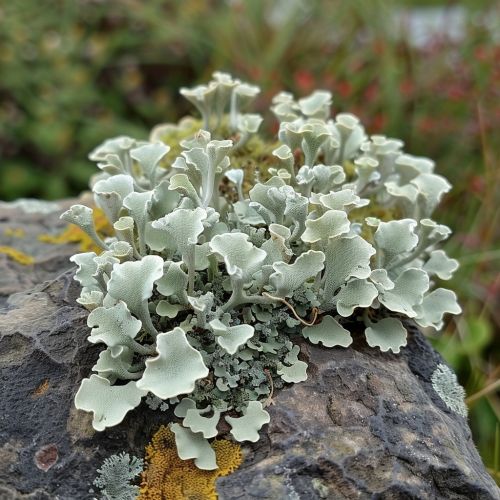Verrucariales: Difference between revisions
(Created page with "== Taxonomy == Verrucariales is an order of lichenized and non-lichenized fungi within the class Eurotiomycetes. This order is characterized by its members' ability to form symbiotic relationships with photosynthetic organisms, such as algae and cyanobacteria. The order contains several families, including Verrucariaceae, the largest and most diverse family within the order. <div class='only_on_desktop image-preview'><div class='image-preview-loader'></di...") |
No edit summary |
||
| Line 2: | Line 2: | ||
Verrucariales is an order of [[Lichen|lichenized]] and non-lichenized fungi within the class [[Eurotiomycetes]]. This order is characterized by its members' ability to form symbiotic relationships with photosynthetic organisms, such as algae and cyanobacteria. The order contains several families, including Verrucariaceae, the largest and most diverse family within the order. | Verrucariales is an order of [[Lichen|lichenized]] and non-lichenized fungi within the class [[Eurotiomycetes]]. This order is characterized by its members' ability to form symbiotic relationships with photosynthetic organisms, such as algae and cyanobacteria. The order contains several families, including Verrucariaceae, the largest and most diverse family within the order. | ||
[[Image:Detail-78987.jpg|thumb|center|A close-up photograph of a Verrucariales lichen growing on a rock surface.]] | |||
== Morphology == | == Morphology == | ||
Revision as of 11:24, 16 May 2024
Taxonomy
Verrucariales is an order of lichenized and non-lichenized fungi within the class Eurotiomycetes. This order is characterized by its members' ability to form symbiotic relationships with photosynthetic organisms, such as algae and cyanobacteria. The order contains several families, including Verrucariaceae, the largest and most diverse family within the order.

Morphology
Members of the Verrucariales order exhibit a wide range of morphological diversity. Most species form crustose lichens, which are characterized by a crust-like thallus that is tightly attached to the substrate. The thallus of these lichens is often grey, black, or brown in color, and may be smooth, warty, or granular in texture. Some species in the order also form endolithic lichens, which grow within rock or other hard substrates.
Ecology
Verrucariales species are found in a variety of habitats around the world, from arctic tundra to desert environments. They are particularly common on rocky substrates, including both natural rock outcrops and man-made structures. These lichens play important roles in their ecosystems, contributing to soil formation and nutrient cycling. They also provide habitat and food for a variety of invertebrates.
Reproduction
Verrucariales species reproduce both sexually and asexually. Sexual reproduction involves the formation of perithecia, flask-shaped structures that contain asci and ascospores. Asexual reproduction is typically through the formation of vegetative propagules, such as isidia and soredia.
Human Uses
While Verrucariales lichens are not typically used directly by humans, they have been studied for their potential applications in bioremediation and as sources of natural dyes and pharmaceutical compounds. Some species have also been used as bioindicators of air quality and climate change.
Conservation
Many Verrucariales species are threatened by habitat loss, pollution, and climate change. Conservation efforts for these lichens include habitat protection, pollution control, and the cultivation of lichens for reintroduction into the wild.
